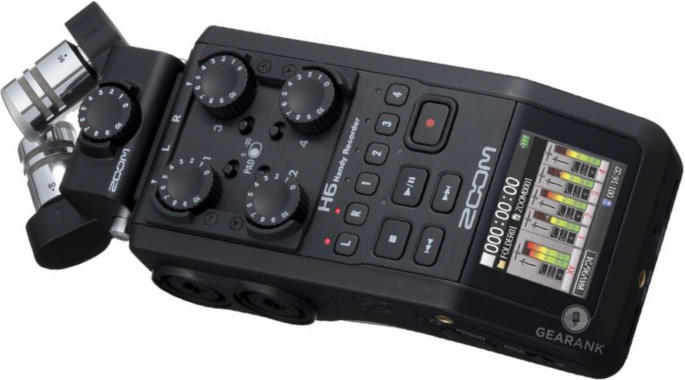
Disclosure
We recommend all products independently of 3rd parties including advertisers. We earn advertising fees from:
• • • • •

• • • • •
Amazon
As an Amazon Associate we earn from qualifying purchases.
• • • • •
Having a portable recorder is important for multiple reasons. While not the best primary form of recording for some situations, the immediacy and convenience of readily recording something on the go still holds value.
Whether you want one ready for sudden ideas, or if you want to use it to conduct interviews, record jam sessions or even to use as an audio interface, this guide will help you choose the best one for your needs
A good portable audio recorder lets you have a great quality capture as opposed to mobile phone recordings that can end up distorted from high volumes. This is crucial for recording jam sessions or for documenting live performances.
Beyond simple convenience, each portable recorder is built differently and the ones that made it onto the top list represent the best on the market.
The Best Portable Audio Recorder Handheld Units – 2024
| Gearank* | SRC* | Check Price | ||||||
|---|---|---|---|---|---|---|---|---|
| Stereo Recorders | ||||||||
 | TASCAM DR-07X | 90 | 600+ | |||||
 | Zoom H2N | 91 | 3750+ | |||||
| Multitrack Recorders | ||||||||
 | Zoom H6 All Black | 96 | 1700+ | |||||
 | Zoom H8 | 94 | 450+ | |||||
Author & Contributors
Raphael Pulgar
I've been an audio engineer for 20 years specializing in rock and metal recordings. I also play guitar and produce original music for my band and other content creators.
Stereo Recorders
TASCAM DR-07X
Cons
- TRS in not the best option for external mics
- Stereo audio recordings not recommended for voiceover work
Pros
- Portable and comfortable form factor
- Great stereo recordings and USB mic capability
- Long battery life
- Great value
The TASCAM DR-07X is an affordable handheld recorder that packs in features often seen in higher priced models from other manufacturers. It features dual condenser microphones mounted on a swivel to achieve true X-Y mic positions to a wide A-B mic position with great phase coherence on both.
Operating it was designed to be easy with most of the functions within thumb's reach. It's powered by 2 AA batteries which lasts you around 17.5 hours of operation; perfect for recording long jam sessions or off-grid field recording.
It also functions as a usb microphone when connecting it to a pc. For additional features, it has onboard reverb and a chromatic tuner.
With the Tascam DR-07X's dual adjustable mics, instrumental recordings have added depth, especially acoustic guitars. The tighter X-Y positioning works great for single sound sources while the A-B position records binaural audio that simulates how we would hear sound. ASMR recordings also benefit from the stereo field. If you record drums, putting the Tascam on the other end of the room makes for a great room mic capture and gives more depth to your drum recordings (though phase alignment must be done in post).
Because of the dual mic setup however, I wouldn't recommend it for people who want to do podcasts or voice overs as those usually require a mono sound source and the TRS mic in isn't the best option.
All in all, the TASCAM DR-07X works best for recording stereo sound sources or instruments. The fact that I can mention all these first before its affordability means that it's a great piece of gear regardless of it.
Specifications
- Inputs: 1 x 1/8" TRS (mic)
- Outputs: 1 x 1/8" (headphones/line)
- Built-in Mic: Dual Unidirectional Mics, Stereo A-B / Stereo X-Y
- Recording / Playback Format: WAV, MP3
- Storage capacity: micro SD cards (3GB max), microSDHC (32GB max), microSDXC (128GB max)
- Power Requirements: USB bus power / 2 x AA batteries
- Battery Life:17.5 hours (Alkaline), 15.5 hours (NiMH)
- Weight: 0.28 lbs.
- Dimensions:6.22" x 2.67" x 1.02"
| Website | Source | *Rating Value |
| Youtube | DJ Yotrip Live | 90/100 |
Zoom H2N
Cons
- Plastic enclosure doesn't inspire confidence in long term durability
Pros
- Very versatile with mic positions
- Good onboard effects
- Decent battery life
The Zoom H2N looks more like a microphone than a recorder. It can capture different wide-range areas with its 5 built-in microphones and 4 recording modes by turning its dial control.
This unit includes effects such as compression, limiting, and low-cut filtering. Its XY built-in microphone allows two matched unidirectional microphones at a 90-degree angle to capture stereo recording.
The MS (Mid-side) microphone is based on the mid-side technique where one microphone acts as a center channel, while the two "side" microphones create ambiance either adding or subtracting sound waves. Using both the XY and MS microphone helps record audio from different directions.
The H2N can be used in a wide variety of ways which is a testament to its flexibility. Its internal microphone and preamps provide clean and crisp audio quality, and it is quite lightweight. Multiple mic patterns also add to the versatility, giving you choices that range from picking up one sound source precisely or the entire room.
Compared to other Zoom products, it has a longer battery life. This makes it ideal for long recording sessions or extended interviews where it's important to be uninterrupted. The onboard compressor and limiter features are very handy in preventing sound peaks from clipping.
There are some disadvantages to the H2N. The mic is sensitive, which could be a plus in many situations, but wind noises and background sounds can get picked up when you don't need it. I recommend using a windscreen to prevent some wind noise. As for background noise, that's just a reality for most mics. The H2N is full featured but all this is housed in a plastic enclosure which raises some concerns especially with long term durability.
Its sibling, the Zoom H1N, is a portable audio recorder meant for recording human voice, ideal for interviews, speech, vocals and the like.
The H2N is a good portable recorder that has a bunch of useful features for any situation. Get it if you want versatility and don't mind the plastic enclosure.
Specifications
- Inputs: 1 Line/mic in 1/8" stereo jack (with plug-in power)
- Outputs: 1 Line/headphone out 1/8" stereo jack
- Built-in Mic: Directional (XY, MS mid mics); Bidirectional (MS mic), 2-channel surround and 4-channel surround
- Recording / Playback Format: WAV,MP3
- Storage capacity: Comes with 2GB microSD; Expandable to 32GB
- Power Requirements: 2 AA batteries, USB (Optional AC adapter)
- Battery Life: 20 hours
- Weight: 4.59oz.
- Dimensions: 2.67" (W) x 4.48" (H) x 1.68" (D)
| Website | Source | *Rating Value |
| Sound On Sound | Tom Flint | 80/100 |
Multitrack Instrument and Voice Recorders
Zoom H6 All Black - 2020 Model
Cons
- This version does not include multiple mic modules and accessories
Pros
- Multiple inputs
- Modular mic system enables use of other mic patterns
- Good amount of gain with a low noise floor
More than just a color change, the 2020 Zoom H6 "All Black" model is an update to the long-running H6 series.
Versatile and user friendly, the H6 All Black features an X/Y stereo microphone capsule, six versatile mic/line inputs, and up to 6-track recording.
The modular inputs allow you to use different mic modules, and you can use the device as an audio interface.
A unique feature of a recorder of this size is its simultaneous recording of 6 tracks with the built-in stereo mics + inputs. This enables multiple mics to be used to record other people or even a drum kit. Despite its size, it has sufficient gain for most mics. This also means that it has a low noise floor which is useful if you're using the unit for field recordings.
A few important things that I found were missing in this version compared to the previous one is the lack of accessories and the inclusion of only one mic module. This might be a dealbreaker for people who saw the older version's accessories and thought the black version would also include them.
Rather than a total revamp and more than just a re-skin, the H6 All Black takes doesn't mess with a proven formula good sound quality and function. And this makes the H6 a great pocket audio recording tool. Get it if you want the multiple inputs for a mobile recorder but be aware that this version does not come with the additional modules and some accessories.
Specifications
- Inputs: 4 x XLR-1/4" combo (mic/line)
- Outputs: 1 x 1/8" TRS (stereo line out), 1 x 1/8" headphone out
- Built-in Mic: Modular (includes X/Y mic capsule)
- Recording / Playback Format: linear PCM Up to 24-bit/96kHz
- Storage capacity: SD card (up to 2GB), SDHC (up to 32GB), SDXC (up to 128GB)
- Power Requirements: 2 x AA batteries / Li-ion battery (BP-L2) / PS-P520 AC adapter (sold separately)
- Battery Life: 5 hours (Li-ion battery), 2 hours 45 min (Alkaline), 4 hours (Ni-MH)
- Weight: 0.64 lbs.
- Dimensions: 3.15" (W) x 6.02" (H) x 1.37" (D)
| Website | Source | *Rating Value |
| YouTube | Ken Rockwell | 91/100 |
Zoom H8
Cons
- Latency as an audio interface is subpar
- Form factor may be a concern for portability
Pros
- Interchangeable mic capsules
- 6 Simultaneous inputs
- 20 hour battery life
Beyond its odd looks, the Zoom H8 is full of features beyond what you'd imagine a handheld recorder to be.
For starters it has 6 simultaneous inputs including mic input jacks, and a 1 x 1/8" secondary input for a capsule. This makes it ideal for multi input conferences and full bands that want a means to record everything in a multitrack format.
The interchangeable capsule system allows for multiple stereo pickup patterns for close miking or ambient sound recording.
Battery life is also optimized with operation up to 20 hours.
It also functions as a multi-input audio interface for recording on separate tracks on a DAW.
Building up from their offerings like the Zoom H6, the H8 takes it to the next level with 2 stereo mics and 6 inputs with full audio interface capability. It's a very niche combination but this makes it a viable option for those looking for a recorder and audio interface in one.
Unfortunately, latency for multitrack recording as an interface is longer than most dedicated audio interfaces. The form factor isn't the most optimal for portability in my opinion.
The Zoom H8 is a do-it-all wonder for those looking at having one gadget for a multitude of uses. Get it if you're a content creator that needs one gadget for multiple tasks.
Specifications
- Inputs: 4 x XLR inputs, 2 x XLR-1/4" combo, 1 x 1/8" (capsule secondary input)
- Outputs: 1 x 1/8" (line out)
- Built-in Mic: Interchangeable Capsule System, XYH-6 Capsule Mic (included)
- Recording / Playback Format: BWF, WAV, MP3
- Storage capacity:SD, SDHC, SDXC (up to 512GB)
- Power Requirements: 4 x AA Batteries / DV DC USB power supply (AD-17 AC sold separately) / USB bus power
- Battery Life: Up to 20 hours
- Weight: 0.78 lbs.
- Dimensions: 1.9" (W) x 4.6" (H) x 6.4" (without capsule), 8.77" (with capsule) (D)
| Website | Source | *Rating Value |
| Gearnews | Bob Malkowski | 90/100 |
Things To Consider When Buying A Portable Handheld Recorder
- Handheld recorders are very convenient to use in many settings such as live performance venues, rehearsals, and even for recording outdoor ambiance. You can use them as stand-alone field recorders or capture high quality audio with your video recordings. They are also used by podcasters for location recording.
- Microphone polar patterns determine how much sound they capture from different directions. Some digital recorders have a built-in omnidirectional microphone that captures all the surrounding sounds from all directions. Some have bi-directional microphones that capture two opposing directions. Others have a unidirectional built-in microphone that only captures sound from a single direction. For example, if you're recording a singer/guitarist and don't want ambient noise then you'll need one with uni-directional mics. A bidirectional mic will allow you to pick up audience sounds and the performer.
- Most recorders have a built-in XY configuration. The XY set-up comprises two cardioid microphones angled at between 90 and 135 degrees positioned at the same point to produce a stereo image. This configuration shows the center of the two microphones panned left and right facing directly at the sound source. Sound arrives at nearly the same time reducing phase problems. Another type of configuration is the MS (mid-side) set-up. This includes a cardioid microphone (mid) that faces directly at the source while having a bi-directional microphone (side) that faces left and right. The “mid” picks up the sounds from the source while the “side” picks up sounds from the side. The AB set-up is another optional microphone configuration. This type includes two cardioid or omnidirectional microphones, spaced a few inches apart from each other, and panned in left/right.
- Storage capacity of internal memory should be taken into consideration when looking for a field recorder and voice recorder. They are usually expandable, so check which type of storage the one you want uses and you can buy larger amounts of memory for longer recording times. Looking into the types of formats it can record determines whether it can support WAV, MP3, or even both.
- It is important to know how long the batteries will last when recording to prevent loss of data in the event of power running out. Knowing the type of batteries you need, whether they be rechargeable or replaceable is important. Check whether you need to keep purchasing batteries or if you can use a USB or AC Adapter for charging.
- Having the right amount of inputs and outputs also depends on how you are going to make use of the recorder. Having a USB connector to store your files on your PC is needed for editing and storing purposes too. For convenience, some recorders have separate headphone outputs and line outputs. Some digital recorders act as audio interfaces as well.
- There are some portable recorders out there with more than the typical 2 stereo channels. Some of them also provide multi-tracking features in which external microphones can be utilized in addition to the built-in microphones. Mid-range priced recorders often have XLR/TS Line inputs for plugging in external dynamic or condenser mics. Optional extra features may include effects such as compression, reverb, and EQ. Some include a metronome and playback tempo change function. In this market, the best deals are ones that offer the most features along with reliability.
Uses
Microphones and Polar Patterns
Microphone Configurations - XY, MS and AB
Storage Features
Batteries
Connections
Other Features
Best Portable Recorder Selection Methodology
The first edition was published in 2017.
We looked at all highly rated handheld digital audio recorders that are sold by major American retailers and short-listed the the most promising for detailed analysis. We then examined information from over 18,700 sources which included retail store ratings, user and expert reviews, forum posts, and more. We processed that information with the Gearank Algorithm to generate the rating scores out of 100 that we used to narrow down the list to just the highest rated options above. For more information about our methods see How Gearank Works.
About the Author and Contributors
Here are the key people and sources involved in this guide's production - click on linked names for information about their music industry backgrounds.
Lead Author & Researcher
Raphael Pulgar
I've been an audio engineer for 20 years specializing in rock and metal recordings. I also play guitar and produce original music for my band and other content creators.
Some of the recording gear I use in my studio includes the Focusrite Scarlett 18i20, Focusrite Scarlett Solo, Samson QH4 Headphone Amp and Cloudlifter CL-1. My mics include Aston Origin, Aston Element, Shure SM57, Rode NT1, Rode PodMic and MXL V67G.
Handheld portable recorders are somewhat of a niche item for me. I usually keep one around for quick note taking, song ideas, recording gigs or rehearsals. I've found use for a them to record overheads and room mics in a limited setup. Regardless of your use case, there's always a place for a portable recorder in your mic locker. It's a good thing to have prepared for when you need it.
Contributors
Jason Horton: Editing and Illustrating.
Media
Main/Top Image: By Gearank.com using a photograph of the Zoom H6 All Black.
The individual product images were sourced from websites, promotional materials or supporting documentation provided by their respective manufacturers.
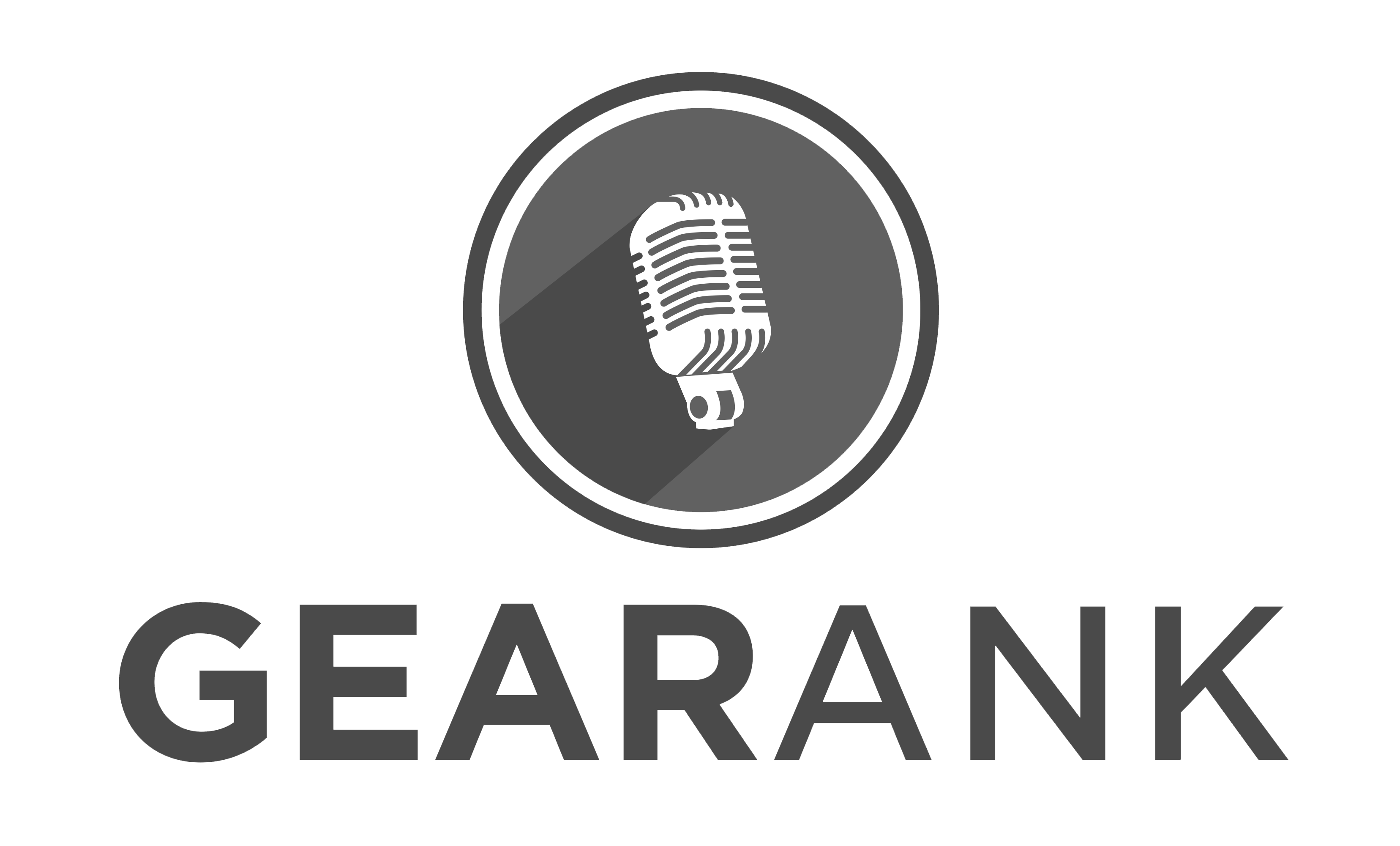

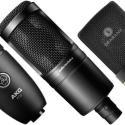
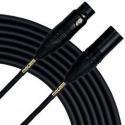
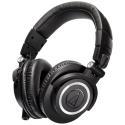
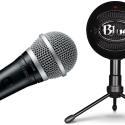
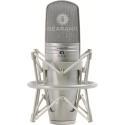

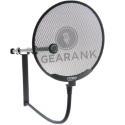
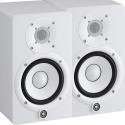
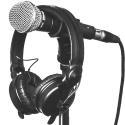
The following recorders came off the recommended list when we published our November 2022 Edition:
Publication of our November 2021 Edition resulted in the following recorders coming off the recommended list above:
Zoom H6 doesn’t support 192KHz but max 96KHz.
Thanks for pointing that out – I made a mistake during editing but it’s fixed now.
Our October 2020 update resulted in the following recorders coming off the recommended list above, but you can still see our analysis of them:\
As a result of the December 2019 update to this guide the following came off the recommended list above, but you can still see our analysis of them:
Allo Friends, thanks for your analysis, very helpful. I am looking for an audio player that give play back the recording of private seminar information without going via internet. I want to listen, and take notes on a keyboard. Thank you very much for recommending me something!
Our recommendations are primarily based on music production uses so we can’t really help you with that – maybe one of the readers here will have an answer for you.
I am curious why on your updated 2018 list you did not include the TASCAM DR-100mkIII as one of your options?
It was on our short-list however its ratings weren’t high enough for us to include it in the recommended list above.
You can see its ratings in the Music Gear Database: TASCAM DR-100mkIII.
There are other much better such as the Sony PCM-D100, PCM-D50 or ICD-SX750D
The PCM-D50 and ICD-SX750D might be quite good but they’re no longer widely available so they didn’t qualify for this guide.
The Sony PCM-D100 was on our short-list, however its ratings aren’t high enough for us to recommend it – you can see its rating here.
UPDATE: The Sony PCM-D100 now has higher ratings compared to most other options and it was added to the recommended list above for our December 2019 update.
Why Roland R-26 is not in the list?
The Roland R-26 was on our short-list but didn’t quite rate high enough to make it into our recommendations – it was very close though and you can see it’s Gearank rating in the Music Gear Database.
Q.
Greetings.
“I am totally blind. Does any of those recorders have some voice guidance built in?”
So they can be accessible for us as a blind community.
Example.
(Olympus LS 100)
:d
I have 2 questions. Can I overdub multiple guitar and bass parts one at a time? Can I plug the handheld recorder directly into monitors?
All of the multitrack recorders above, the ones that list the number of Simultaneous Recording/Playback channels, allow you to record additional parts.
All of the ones that have a line out listed in the specifications will drive powered studio monitors.
Today we removed the Roland R-05 Wave/MP3 Recorder from out recommended list above due to it no longer being available from several major music gear retailers.
If you would like to read what we said about it, then you’ll find it at: Roland R-05 Meta-Review.